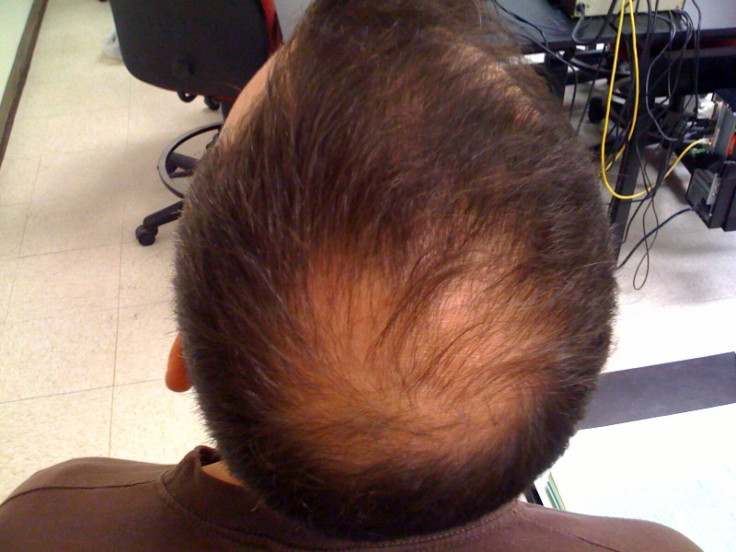A Baldness Cure? New Hair Loss Treatment Grows Follicles Using Human Cells In ‘3D Spheroids’

Could a cure for baldness be within reach? Scientists think they may have found a new treatment that could put an end to our hair loss anxieties -- which is probably causing more hair loss in the first place.
For the first time, researchers say they’ve successfully grown human hair from dermal papilla cells taken from human hair follicles. The BBC reported that scientists from the University of Durham in the U.K. and Columbia University Medical Center in the U.S. found a way to actually grow new human hair, as opposed to just relocating it or slowing its loss with drugs.
After taking cells from the base of human hair follicles, they clumped them together in “3D spheroids” -- a strategy, they said, that stimulated new hair growth. Scientists took these clumps of follicle cells and transplanted them into human skin grafted on the backs of mice. Six weeks later, the researchers noted new follicle formation in five out of the seven cases. There were even some tiny hairs that began to form.
“If it works in humans, it actually opens up the possibility of hair restoration for many more patients than are currently available,” study co-leader Angela Christiano, a dermatology professor at Columbia University Medical Center, told NBC News.
In the past, whenever dermal papillae, the small, nipple-like extensions of the skin which play a critical role in hair formation, were used to try and cultivate new hair, the cells would simply transform into skin.
“This signature change translates to a partial restoration of inductive capability, and we show that human dermal papilla cells, when grown as spheroids, are capable of inducing de novo hair follicles in human skin,” researchers wrote in the study, published in the journal Proceedings of the National Academy of Sciences.
By the age of 60, 65 percent of men and 80 percent of women will have noticeable hair loss -- thinning of the scalp or male-pattern baldness. Current options for treatment are pretty limited. As Time notes, medications only slow the rate of hair loss, they don’t reverse it. And surgical methods simply move the hair from one place to another.
"About 90 percent of women with hair loss are not strong candidates for hair transplantation surgery because of insufficient donor hair," Christiano told Voice of America. "This method offers the possibility of inducing large numbers of hair follicles or rejuvenating existing hair follicles, starting with cells grown from just a few hundred donor hairs.”
This isn’t the first time scientists have made progress towards an end-all to baldness. In 2012, scientists in Japan used stem cell therapy to regenerate hair follicles on the backs of mice. The result? A mouse with a really killer Travis Barker-style Mohawk made of human hair.
Researchers from Tokyo University of Science hope to begin human testing in a few years.
© Copyright IBTimes 2025. All rights reserved.






















